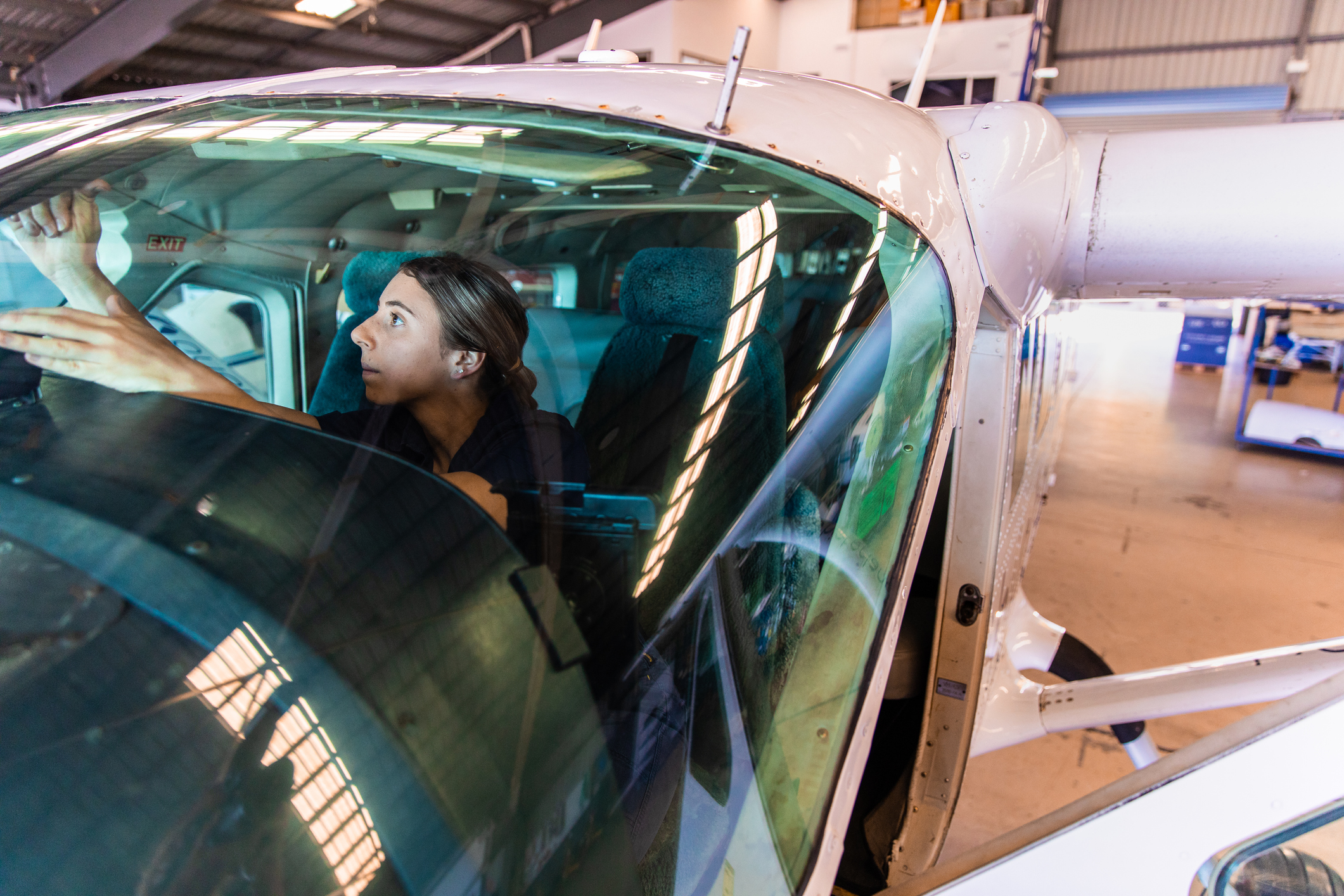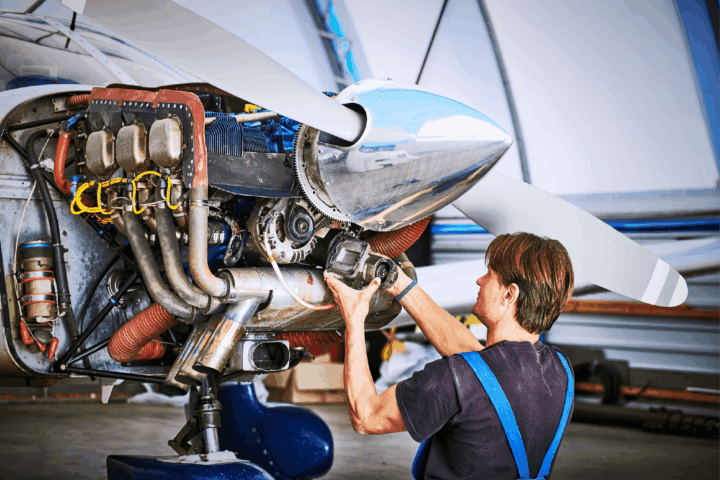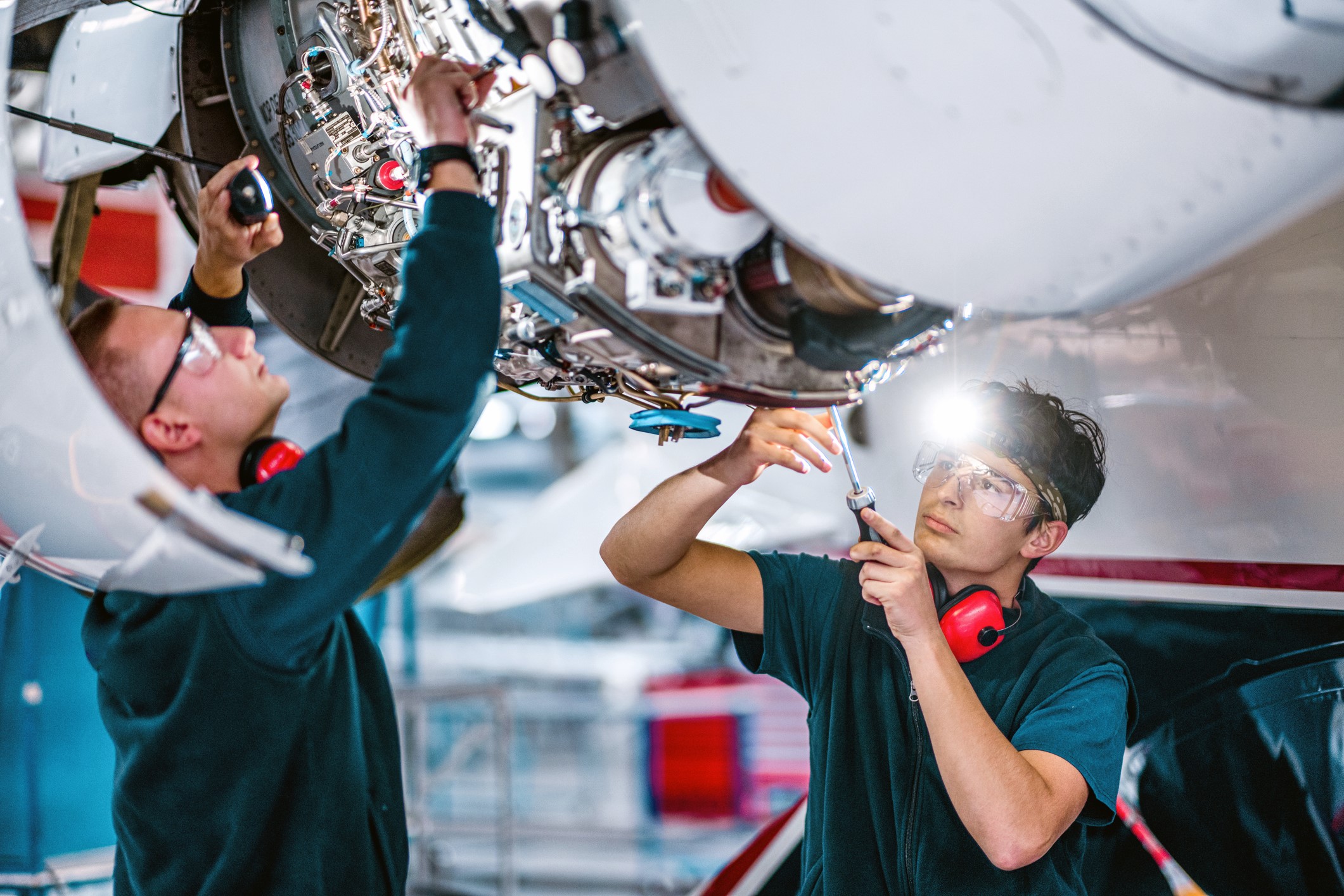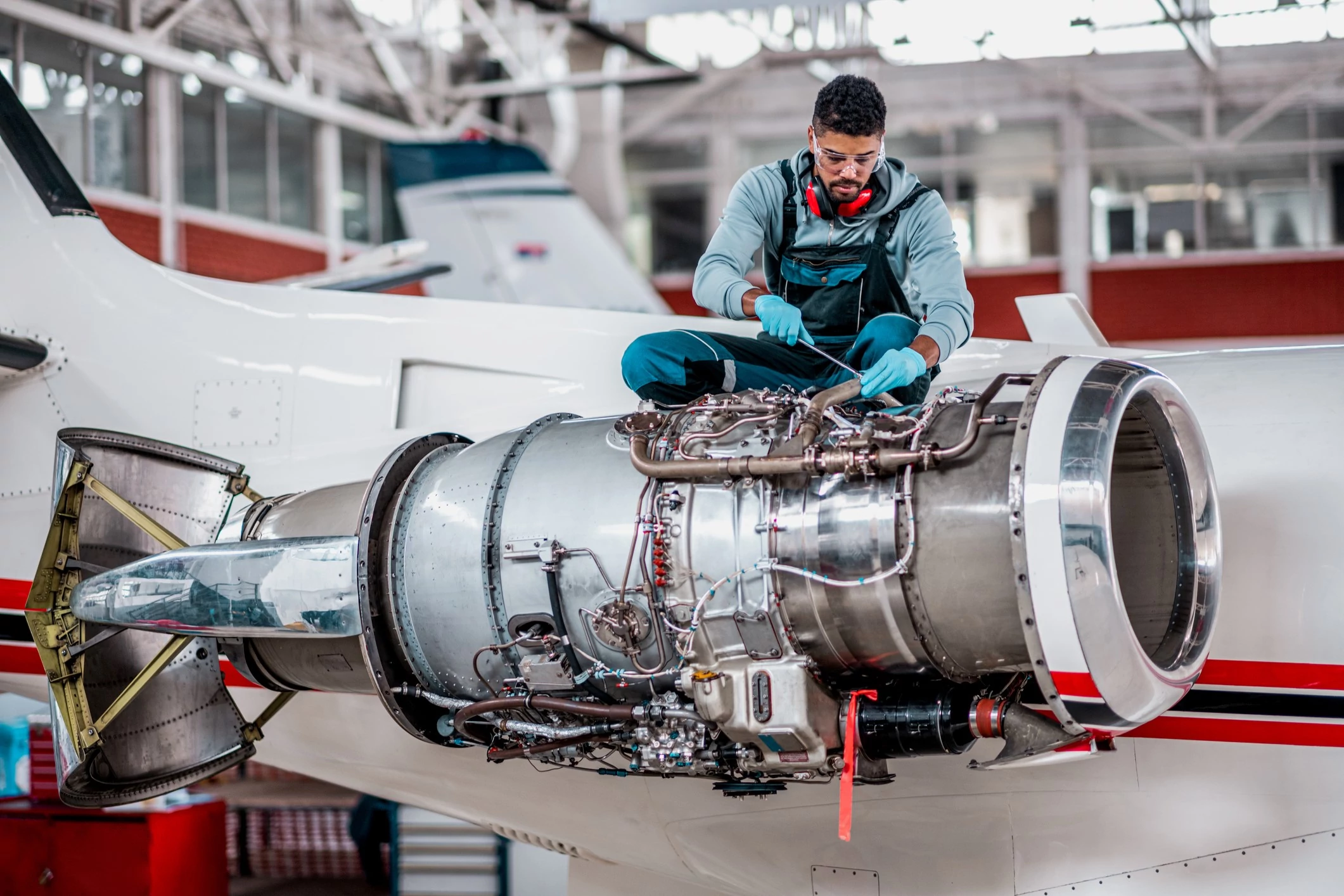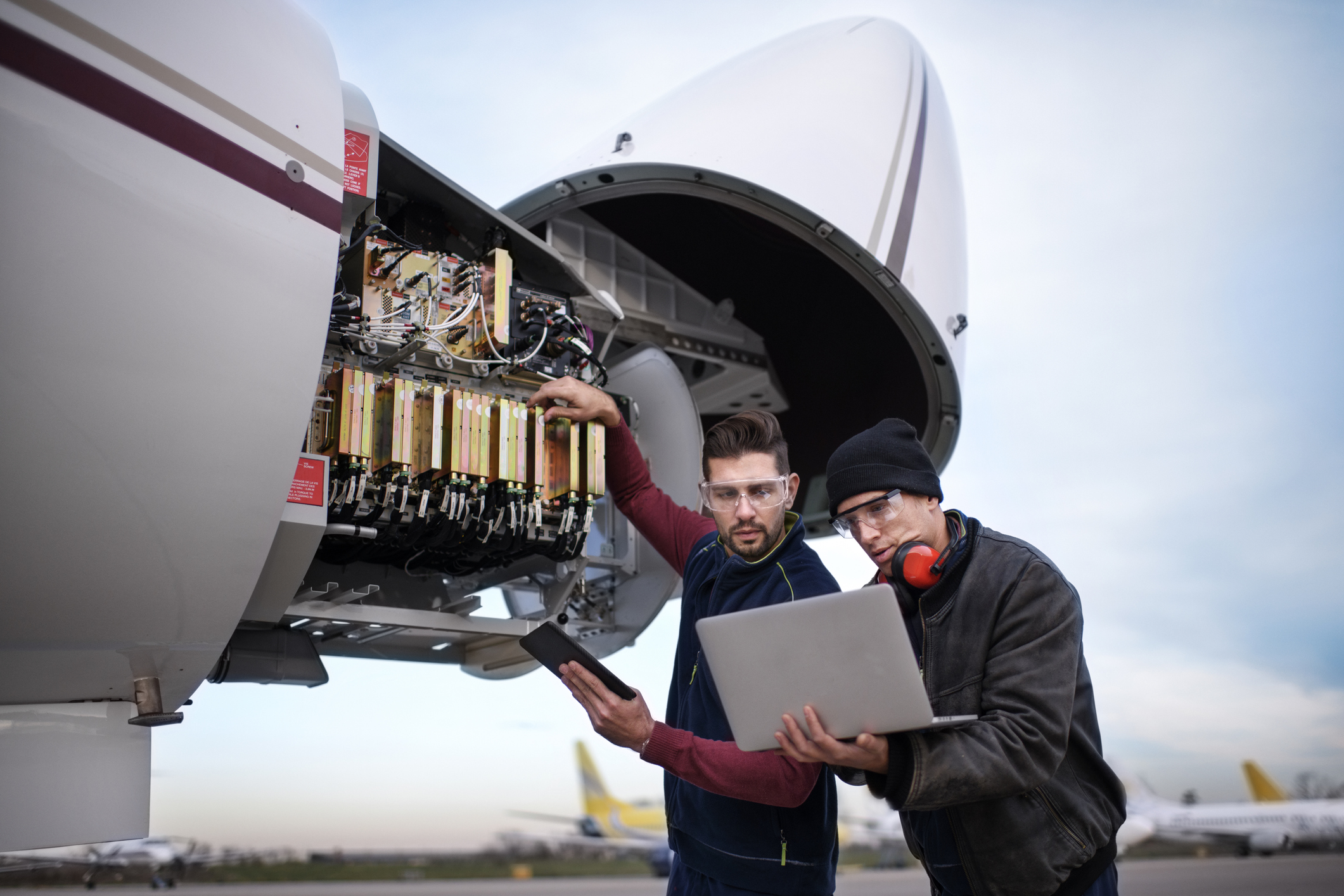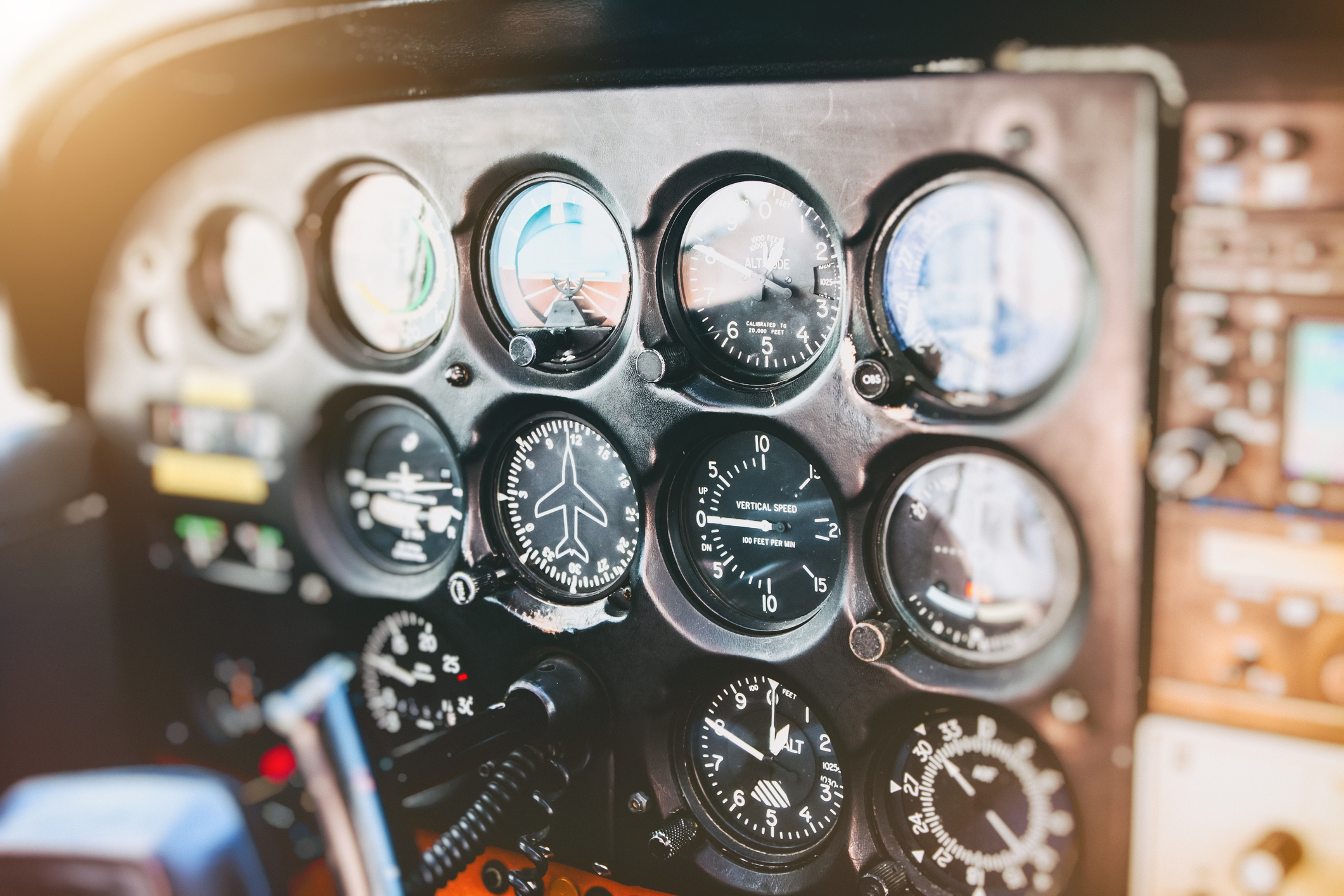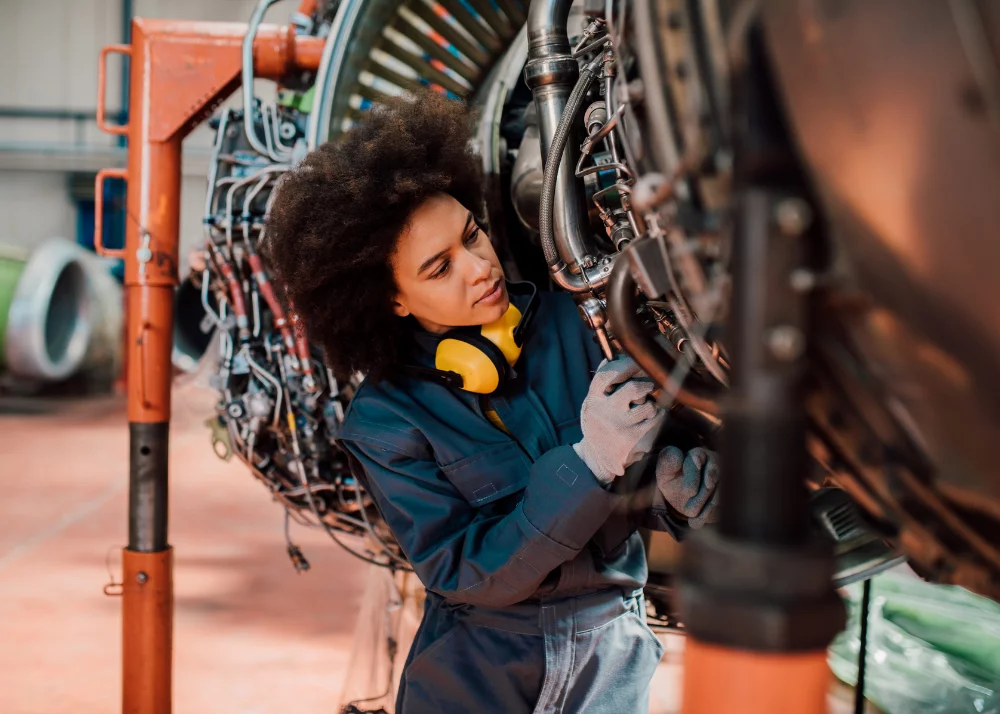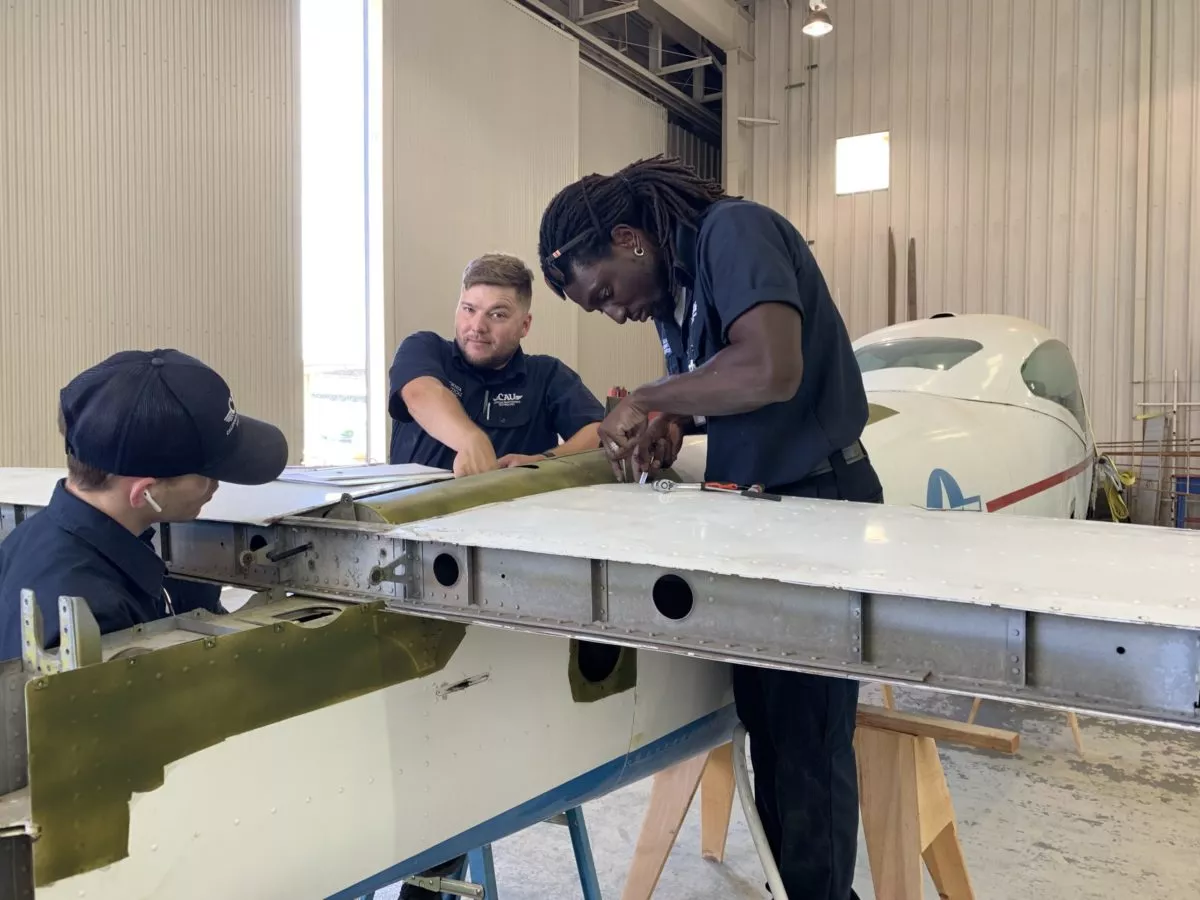Jet planes are powerful machines that can travel above the clouds, reaching incredible heights and faraway destinations. But they may only take to the skies with proper care, maintenance, and continual safety checks. Before an airplane leaves the ground, an experienced Aviation Maintenance Technician (AMT) must ensure that it is inspected, routinely maintained, and serviced. AMTs are responsible for keeping the aircraft in their fleet safe – along with the passengers, flight crew, and cargo they carry.
The job of an AMT is to ensure proper mechanical functioning for a safe, smooth flight every time. If you have been interested in making your mark in the aviation industry, consider a career as an Aviation Maintenance Technician. This position allows you to get up close and personal with all types of aircraft, big and small – and play a more significant role than one may imagine. Let’s take a look at a typical day for an AMT.
What does an AMT do day-to-day?
Pilots who are also aircraft owners can take basic care of their planes, handling some of the more-straightforward repairs and upkeep. However, there are specific Federal Aviation fly Administration (FAA) rules about what kind of maintenance pilots can and cannot perform. Here’s a hint: it’s preventative, only applies to aircraft that the pilot owns or operates, and must not involve “complex assembly operations.”
This is where a licensed AMT is needed. The role of the Aviation Maintenance Technician is a highly skilled position. The AMT is the go-to person for all aircraft-related mechanical or electrical issues. They are the ones to call:
- To troubleshoot issues;
- When there are immediate problems that require attention and resolution before a jet can take off;
- When there are complicated repairs that need to be done, etc.
An AMT should have a complete understanding of industry standards and is the one who can sign off stating that a particular plane is safe to fly. This occupation requires careful attention to detail and a diligent work ethic.
The Daily Responsibilities of an AMT
The daily responsibilities of an AMT can vary from one day to the next. While everyday routines will usually include handling the technical parts of the aircraft, specific tasks for the day may change based on several factors. For example, working for the military or the government will most likely generate vastly different daily responsibilities than being employed by a charter organization.
Projects will also depend on the aircraft type being worked on, the diagnosis, the maintenance needing to be performed, etc. The daily tasks of an Aviation Maintenance Technician may include the following:
- Diagnosing aircraft issues concerning both electrical and mechanical systems.
- Uncovering and replacing defective parts (by hand or via power tools).
- Closely examining new parts for defects before installing them on the aircraft.
- Testing parts and components of the aircraft using specific gauges and diagnostic tools.
- Performing scheduled preventive maintenance.
- Reading and understanding the maintenance materials for the specific aircraft.
- Completing repairs involving wings, brakes, electrical systems, and other areas.
- Inspecting work that is completed before the aircraft takes flight to make sure it meets industry performance standards.
- Maintaining a clear, detailed record of maintenance and repair for all work performed.
Becoming an Aircraft Mechanic
Several programs offer the specialized training needed, and becoming an AMT may be easier than you think. The FAA even has a list of certified schools for you! According to the FAA, most programs take between 18-24 months, depending on what ratings you want (assuming you want both the Airframe and Powerplant ratings).
At California Aeronautical University (CAU), the AMT program can be completed in about 17 months, with the option to earn an associate’s degree in 5 additional months. The timeframe will vary from program to program, so be sure to do your research. (There are other ways to obtain the necessary training and experience besides school, like on-the-job training.)
Choosing an FAA-certified Part 147 school is in your best interests if you select the education route. Also, while the cost might be a factor, larger institutions like universities may have financial assistance available to those who qualify. Look for other benefits as well, such as year-round classes, career planning assistance, and other features like CAU’s personalized 263-piece Sonic toolkit every graduate receives (valued at $6,000).
Choosing a program and completing your training is just the beginning of life as an AMT. Your next step involves taking the Airframe and Powerplant (A&P) test. Completing your training should equip you with all the tools necessary to pass the test and obtain your certification (license) from the FAA.
Career Growth for Aircraft Mechanics
For the foreseeable future, as long as air travel is around, there will be a need for Aviation Maintenance Technicians. According to the U.S. Bureau of Labor Statistics, there is continued growth in the industry for AMTs as the outlook predicts over 13,000 job openings each year between 2021 and 2031. Once in the career field, you can take various career paths depending on your education and training. Some common types of jobs held by AMTs include:
- Aviation Maintenance Technician. Performs the daily tasks discussed above.
- Lead Technician. There are regular aviation technicians, and then there are those with more leadership roles. These individuals oversee operations by assigning and monitoring the work that is performed.
- Aviation Maintenance Instructor. Instructors work at colleges, universities, and training programs that teach future AMTs everything they need to know.
- Aircraft Maintenance Planner. These individuals handle business development and land use.
- Maintenance Controller: A Controller works out of one centralized location to troubleshoot issues on the ground or in the air.
- Maintenance Engineer: Someone in this role applies their knowledge of repairing aircraft by modifying the actual aircraft design (this position may require more education or an advanced degree).
There are quite a few opportunities for variety within the field of airline mechanics. As an AMT, you may work in a hangar, an airfield, or a specified repair station. You could be employed by a public airport, a private company, or the federal government. If you’re looking for a specific role, be sure to research the requirements for the position, as you might need additional qualifications based on the job and company.
The Wrap Up
An Aviation Maintenance Technician must be skilled in diagnosing issues, finding solutions, and maintaining successfully-running airplanes, so everyone remains safe. A typical day for an Aviation Maintenance Technician may be filled with many different activities.
AMTs can work with some well-functioning aircraft, others requiring routine maintenance, and a few that may need significant repairs. If you dream of working within the aviation industry, life as an AMT is an important role that gets you up close with these extraordinary machines.
Ready to soar in your aviation career?
Mr. Matthew A. Johnston has over 23 years of experience serving various roles in education and is currently serving as the President of California Aeronautical University. He maintains memberships and is a supporting participant with several aviation promoting and advocacy associations including University Aviation Association (UAA), Regional Airline Association (RAA), AOPA, NBAA, and EAA with the Young Eagles program. He is proud of his collaboration with airlines, aviation businesses and individual aviation professionals who are working with him to develop California Aeronautical University as a leader in educating aviation professionals.
